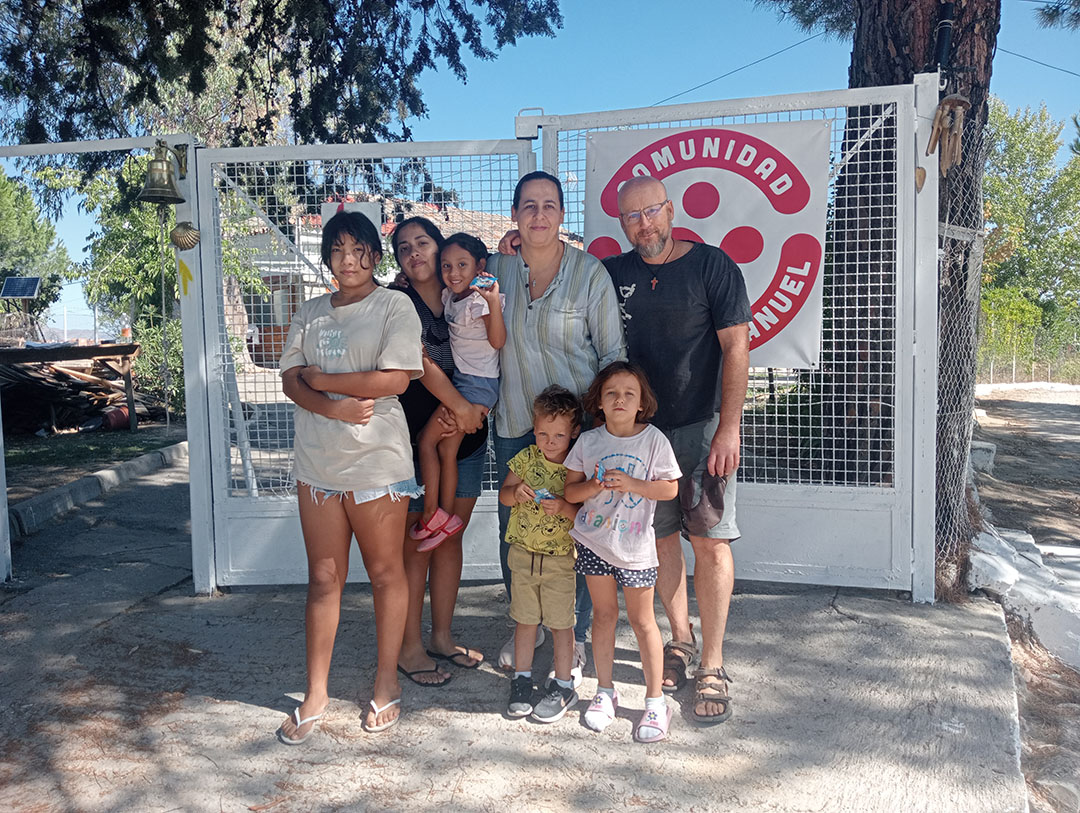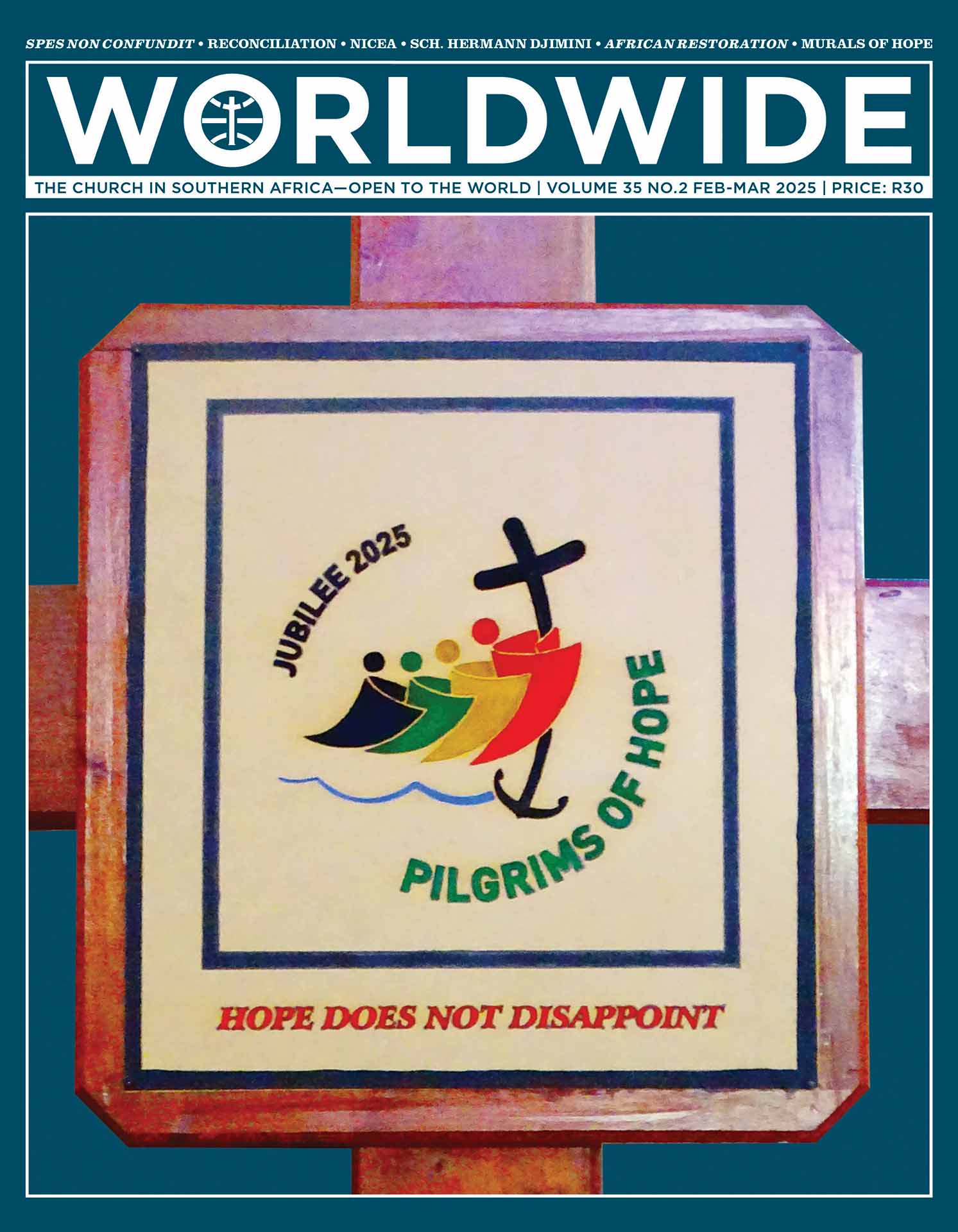
FINDING A HOME
The cross is also the anchor of our hope as it appears in the Jubilee logo embedded onto the lit candle. The lower part of the cross is elongated and turned into the shape of an anchor, which is lowered into the waves and stabilizes the ship amidst the storms.
In addition, the cross is bent down backwards towards the four human figures. This indicates God’s act of compassion, seeking us out and offering surety of hope.
FRONTIERS • BUILDING COMMUNITIES
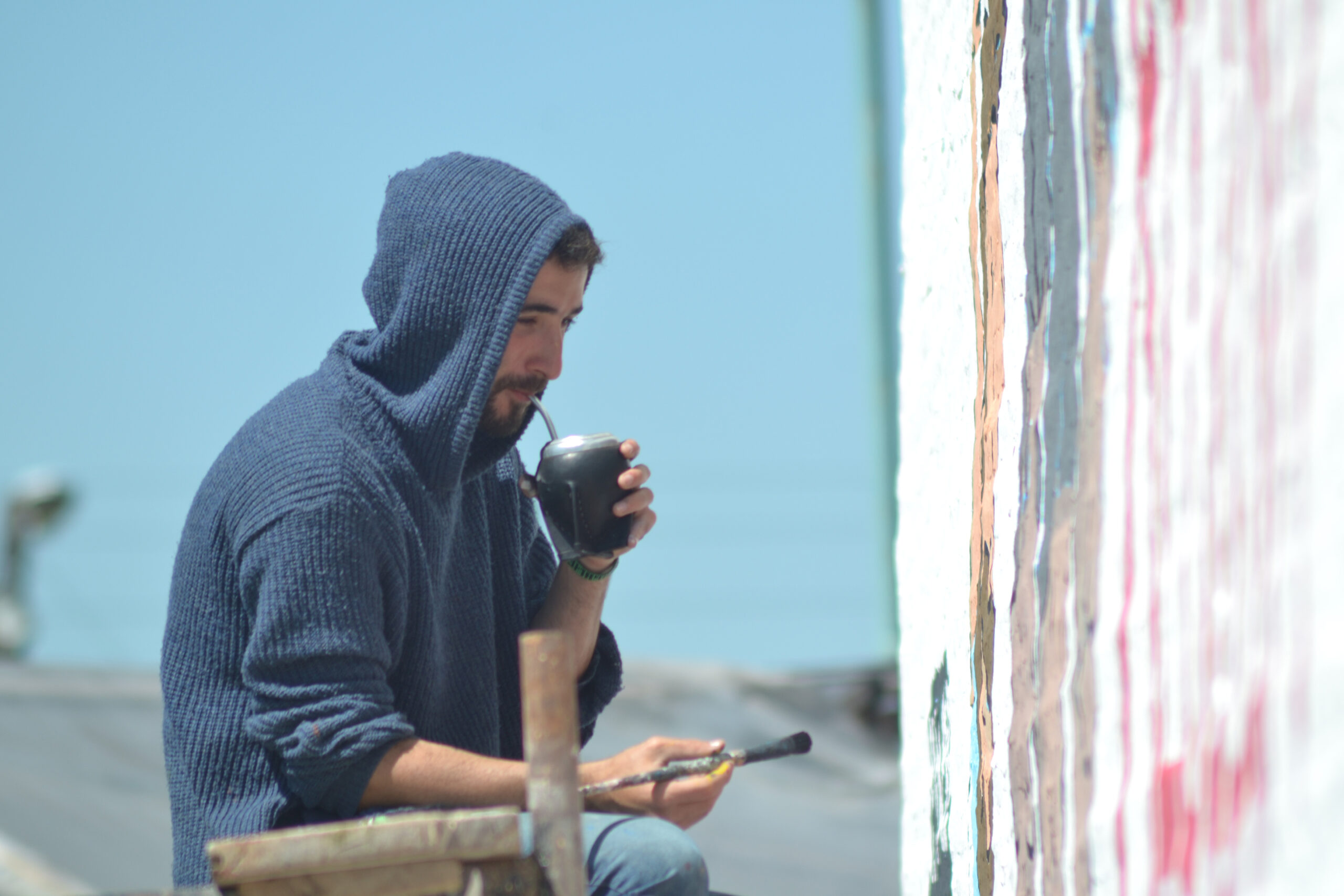
SOWING HOPE THROUGH PAINTING MURALS
Cristian (“Cris”) Daniel Camargo is a 32-year-old Argentinean artist whose vocation it is to bring hope through the murals he paints in and with communities. He has painted 249 murals in America, two in Europe and now he plans to start painting them in Africa as well.
BY ENRIQUE BAYO MATA, MCCJ | PHOTOS BY CRISTIAN DANIEL CAMARGO
CRIS LOVES football as most Argentinians do, but even more than that he loves drawing. As a child, when someone asked him what he wanted to be when he grew up, he imagined himself doing many different things, but he never imagined spending his life without drawing. He defines himself as an ‘itinerant missionary’, and since October 2021 he has been travelling around the world painting collective murals with communities that invite him to do so. He has no home of his own, but he says he actually has “many homes because there are a lot of places where they welcome me, and where I can stay.”
Cris is constantly on the move painting murals which transmit hope to the communities he engages with, like the ‘pilgrim of hope’ that Pope Francis invites us to be during the Jubilee 2025.
His Vocations
Cris’s drawing vocation and his Christian faith go hand in hand. He was born in Mar del Plata, in Southern Argentina, into a family of four siblings, an older sibling and three triplets, of whom he is one. From a very young age, he was taught Franciscan spirituality at home because his parents, Raúl and Alicia, belonged to the Franciscan Youth (FraYou). His faith was strengthened from the age of 14 thanks to the basic ecclesial community of Our Lady of Guadalupe and San Juan Diego in the Margaritas neighbourhood of his city. At the age of 15, the testimony of a lay missionary, Verónica Rubí, who came from Mozambique, made a great impression on him and he felt the desire to become a missionary. At that time, he still did not know how he could combine his missionary vocation with his passion for drawing.
He graduated in Fine Arts with a degree in drawing at the Faculty of Fine Arts in La Plata, a city near Buenos Aires. His parents wanted him to combine his art studies with pedagogy, in order to become a teacher, thereby guaranteeing a certain economic stability for himself, but Cris put his whole heart into Art and since 2011 started ‘earning a living’ by having his drawings in print by different Argentinean publishing houses. In 2018, the missionary enticement which Verónica Rubí had awakened in him, Pope Francis’ call to become a ‘Church on the move’, as well as the social experience which he had witnessed in his grassroots community, began to demand something more from him. He remembered the Chilean muralist El Mono González— who did collective murals and whom Cris had met during his university years—and imagined that he could do the same. He found the key to achieving this in Che Guevera’s ‘Diarios de motocicleta’ (motorbike’s diaries); a phrase from Che which seduced him read: ‘Anyone who wants to change the reality is my brother’.
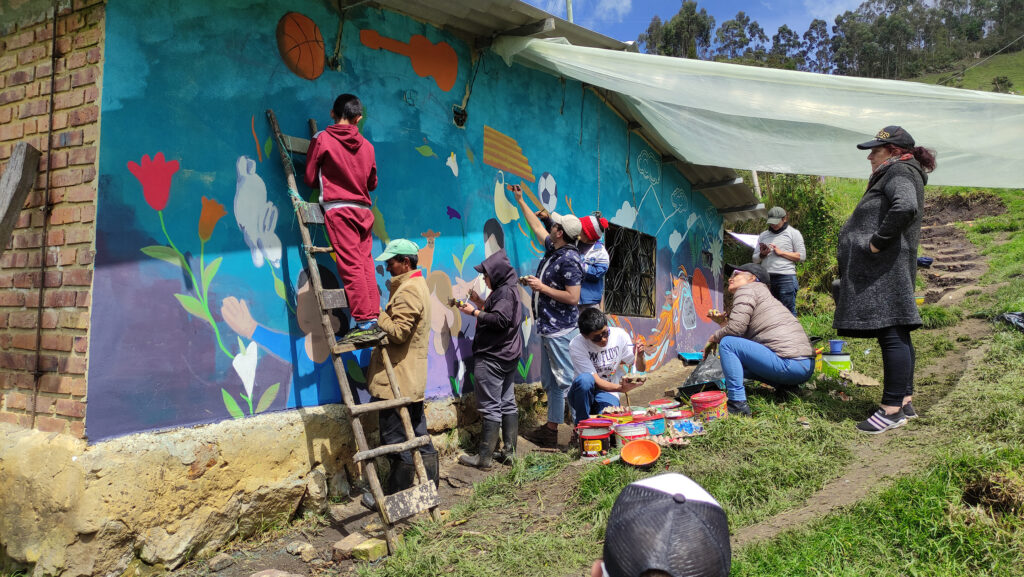
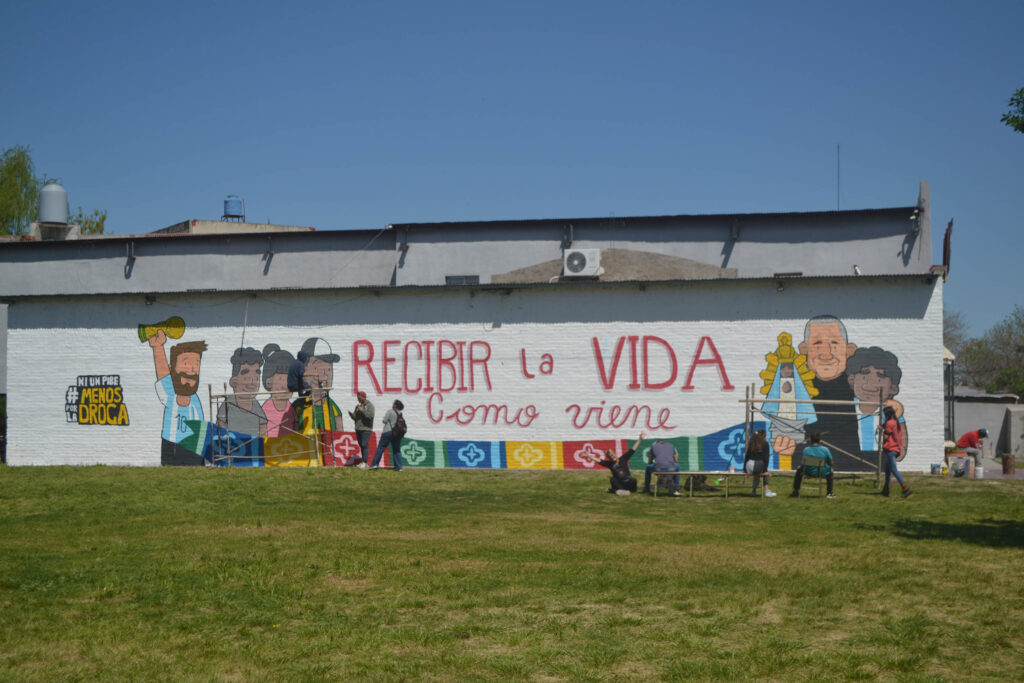
On the Move
Cris wanted to change reality with his art by traveling around the world, just like Che did, but without the violent methods employed by the Argentinian guerrillas, ‘but in the way of Jesus, along the lines of peace and justice’. He got in touch with the Chilean musician and Jesuit Cristóbal Fones, who had initiated an itinerant mission throughout America, and asked him for advice. Fr Fones restrained him a little by telling him that he first needed to learn how to organise a group to paint collectively. He suggested that instead of making a linear trajectory like Che, he should put himself at the service of the communities and heed their call wherever he was needed.
Cris wanted to change reality with his art by traveling around the world, ‘but in the way of Jesus, along the lines A community in Páramo de Sumapaz, Colombia, paints a mural of hope. of peace and justice’.
Cris took that advice and began to move around Argentina. In 2019 he painted 29 murals in different places and communities in the country and by 2020 he had painted another five when the COVID-19 pandemic caused a worldwide deadlock. He had to adapt his work to become virtual. It was on an online meeting of the Laudato Si’ Movement that he met the Colombian Consolata missionary Jonathan Acuña, who invited him to Colombia. In October 2021, Cris left Argentina for the first time to paint abroad.
His Method
In spite of the differences between countries and realities, Cris always works with the communities. “It’s not about creating new communities, but about working with the existing ones and strengthening their cohesion and unity. In the communities there are usually different groups, but there is only one painting mural group and this forces everyone to agree on its design. When I arrive in a community, I ask, “what are we going to paint?” and I present a series of dynamics about their own reality, so that they remember their history and imagine together another possible world which can be built in a more peaceful manner, a better world, and how to reflect it visually. My idea is that the murals should reflect the possible hope which is in their concrete reality that stuns them.”
For Cris “the mural is just an excuse” because the most important thing is the dynamics that lead to its conception and the implementation of what has been envisioned together. Cris makes a first sketch that everyone corrects together, even after they have started painting the mural. Painting together strengthens the bonds between people and creates a particular atmosphere of dialogue which Cris has experienced many times: “people open up, free themselves and say things which are inside them”, and the mural remains “as a point of reference for the community, to remember what they have been able to do together.”
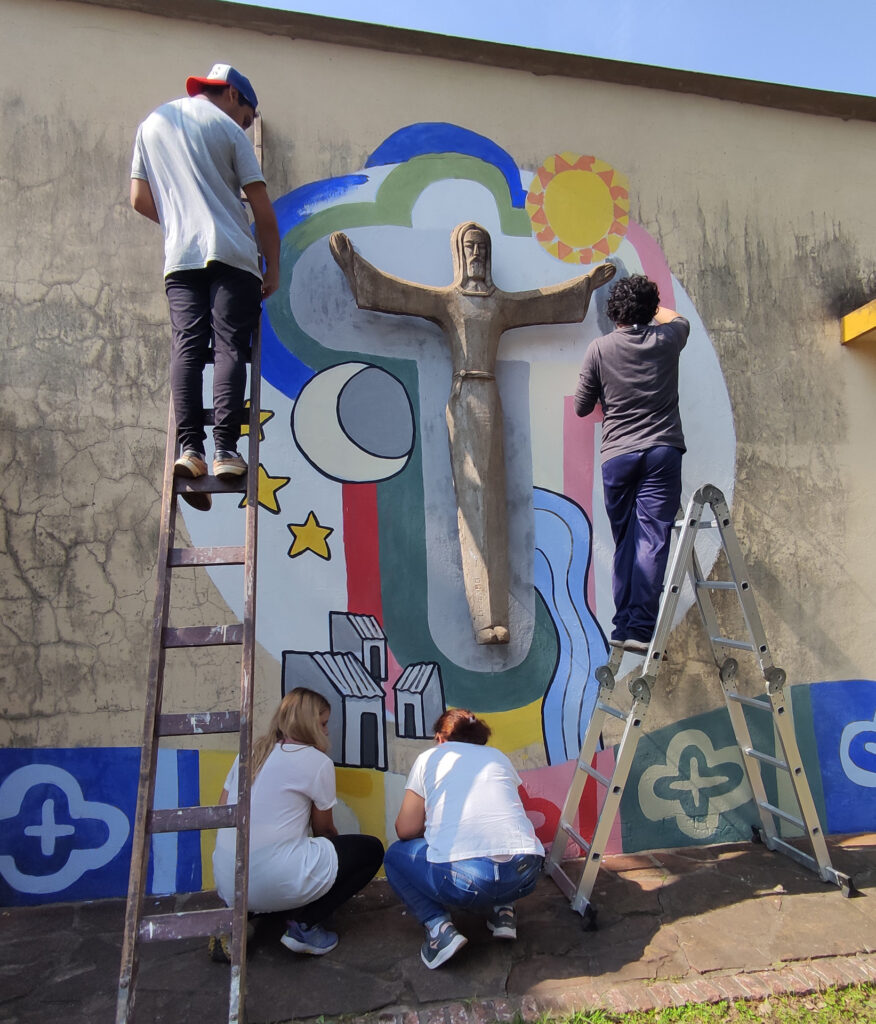
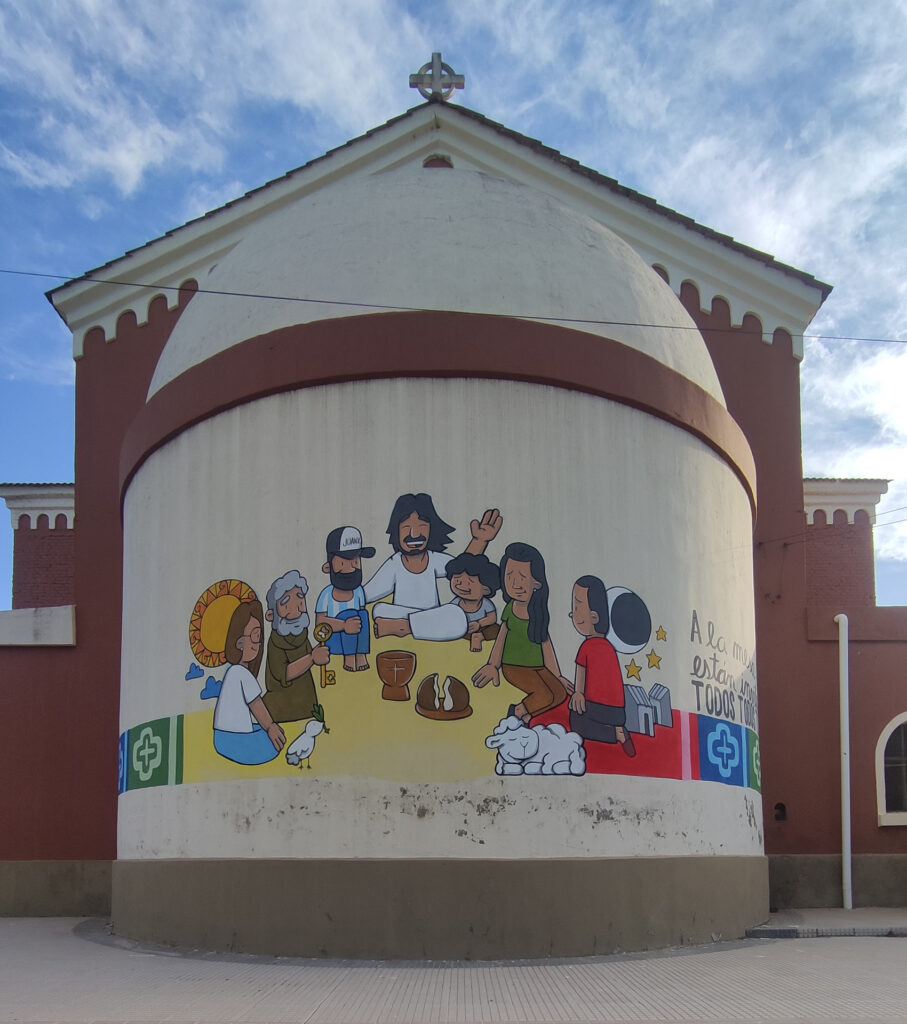
They use brushes and acrylic paint, which makes it easier for everyone to paint. “Even those who initially admit: ‘I don’t know how to paint’, usually end up painting. I coordinate and keep an eye on everyone and on each one’s personal process. Only at the end do I pass the ‘black line’, which is like ‘the director’s baton’ that unifies everything and corrects small mistakes.”
Travels
From October to December 2021, Cris painted 16 murals in different communities in Colombia, in conflict zones affected by the presence of guerrillas, paramilitaries or drug trafficking, where people really needed hope. In July 2022 he went to El Salvador at the invitation of Amerindia, a group of Latin American theologians, and painted murals in several grassroots communities, trying to bring hope to stressed people in a country subjected to a state of emergency decreed by President Nayid Bukele. That same year he painted two murals in Guatemala, one in a Claretian community and the other in a Scalabrinian migrant reception centre. Then Venezuela followed; a country which Cris describes as ‘devastated’ because “it is not poor like El Salvador; there we instilled hope to people in that very difficult reality.” He managed to return to Colombia in 2022 and painted in some communities which he had not been able to visit on his first trip.
In 2023 he was in Argentina, always itinerant, painting murals in the Hogares de Cristo (Homes of Christ), which were created at the initiative of the Curas Villeros, priests from Buenos Aires who chose to work in the peripheries, inspired by the then Archbishop of Buenos Aires, the current Pope Francis. In all these centres— some of them dedicated to welcoming people wanting to rid themselves of addictions such as drugs or alcohol— Cris spent entire days painting collectively.
In 2024 he continued painting in Argentina and inside prisons at the invitation of the prison ministry. He travelled to Chile, Uruguay and, for the third time, to Colombia before arriving in Europe where he visited Rome and painted two murals at the invitation of the Salesians, in an oratory in Turin and in Moniga, near Verona.
On his way to Kenya, after being persuaded to visit this country by his friend Jonathan Acuña, who is currently stationed there, Cris said: “Going to Africa is one of my missionary dreams. I always dreamt of travelling the world to paint and be useful, but I think I dreamt less boldly than what the Lord is now giving me.” Although he has organised his programme with the Consolata Missionaries and the Xaverian Missionaries, Cris knows that “no matter how much you plan, new things always come up and you have to be open to new things.” He is aware that “Africa is not Latin America, it is something unknown to me, the times, ways, languages and cultures are different, but I know that I am going to paint. That is enough for me.”

